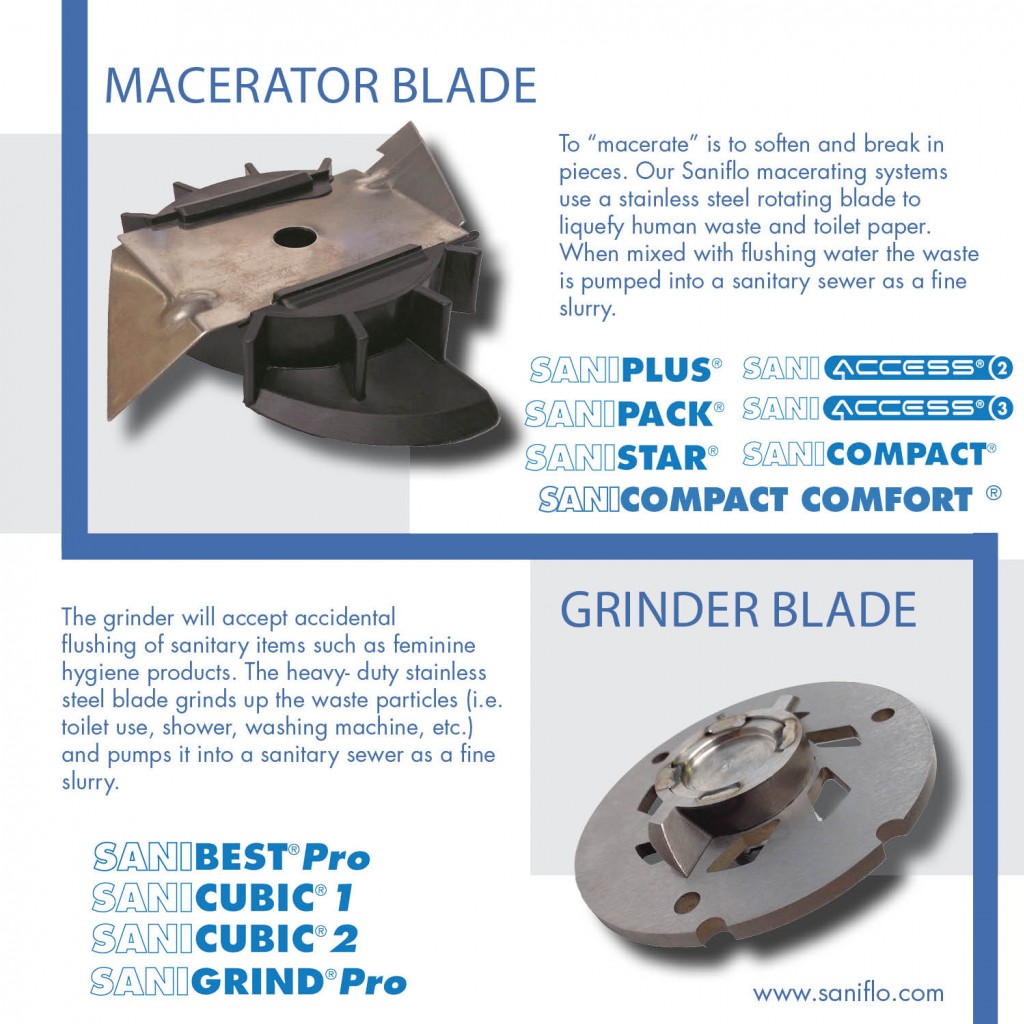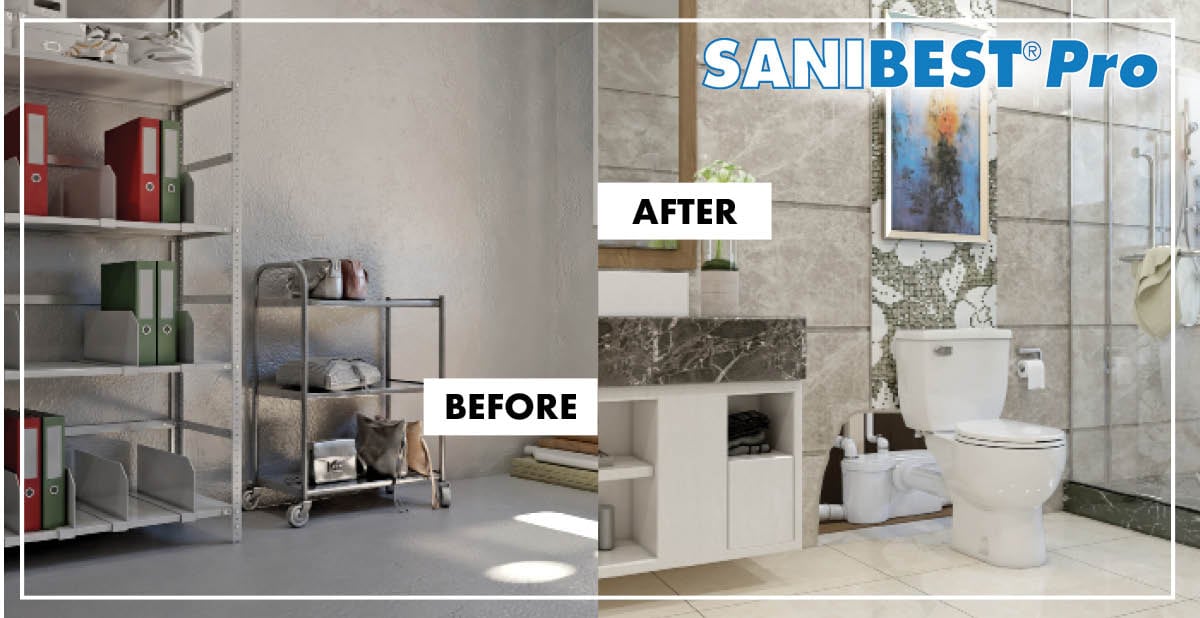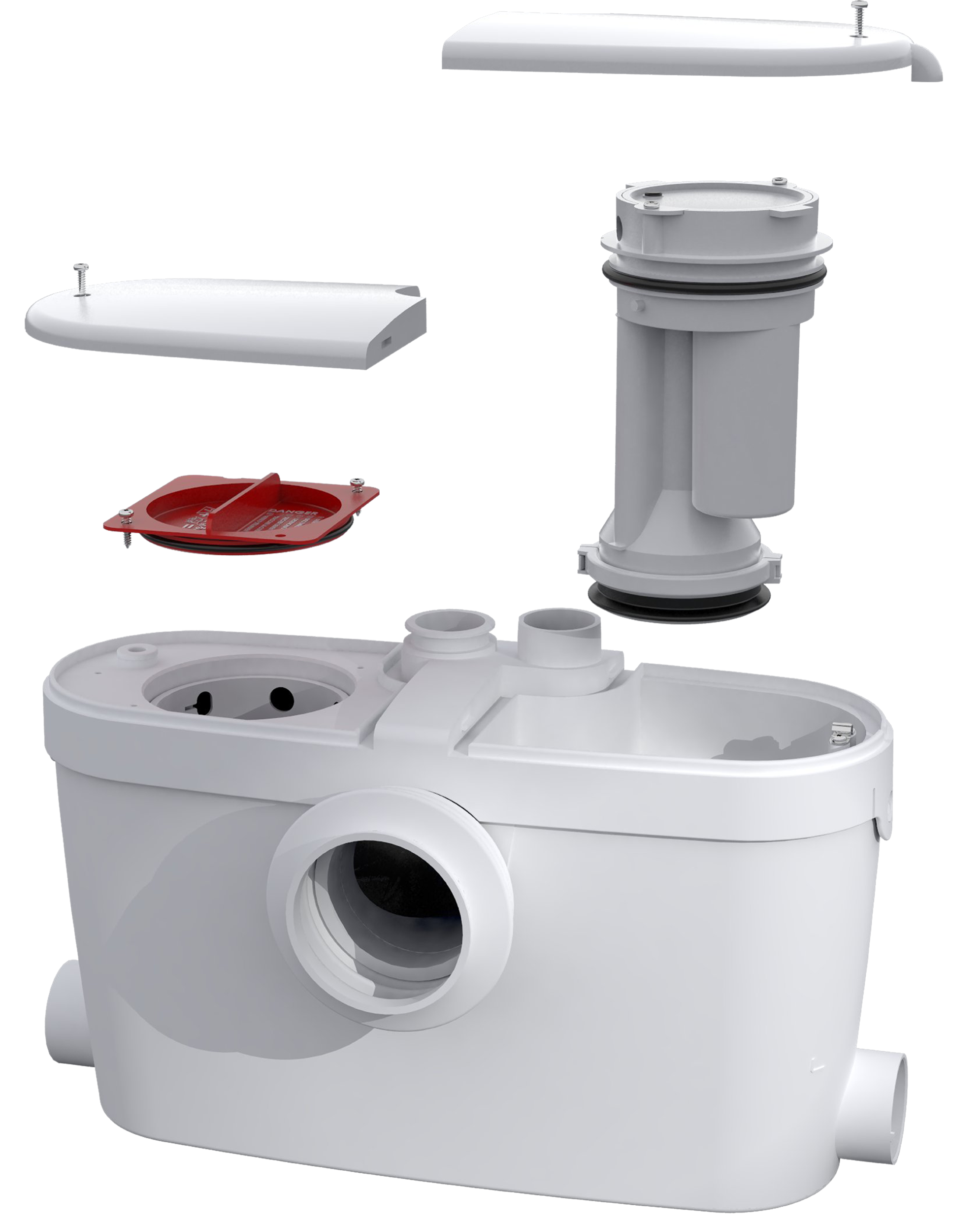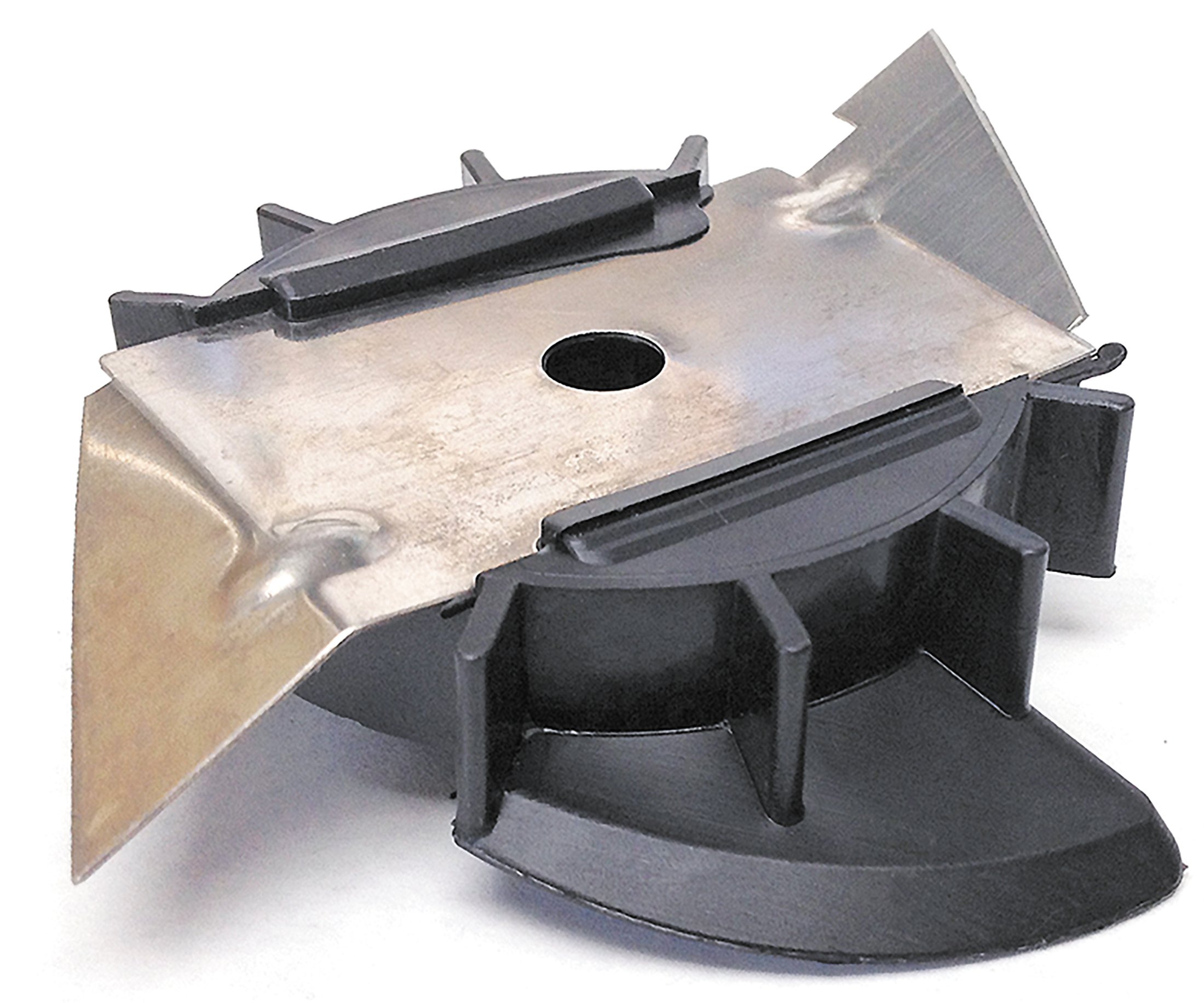What is a Macerating Pump System and How Does It Work?
Blog , Learn more 01/17/2020

It's an all-too-common scenario: You want to create an entirely new bathroom in your basement, attic, garage or outside, by the pool. But you have no idea where to start. You're wondering: "Is it even possible? And how much is this crazy idea going to cost me?"
You call a plumber for an estimate, and he tells you he has to break through the floor or drill through the concrete to install a drain line for conventional plumbing — a messy and time-consuming job with a high price tag.
Maybe the plumber suggests a sewage ejector system. Still, he will need to jackhammer and dig up the floor, even while not knowing what's beneath. There are also several other possible hazards, such as not knowing how thick the floor is, or if there are unforeseen rocks or pipes. If the installer runs into a ledge, you may have to reconfigure the bathroom layout. Plus, any time you disturb the concrete floor, there's a chance of water from the outside seeping through. Of course, following all of the above, you will have to re-cement the space. In some cases, depending on where you’re planning to create a bathroom, breaking through the ground is not even possible.
The fact is, digging is unpredictable and, quite frankly, easier said than done. So what do you do?
There's a solution that requires no expensive renovation or breaking through floors, concrete or otherwise. Whenever it seems impractical or impossible to install conventional plumbing fixtures, this is your answer: a macerating pump system — a straightforward, affordable solution to creating a complete or half bathroom practically anywhere.
What’s a macerator? Instead of routing flush water through below-floor drainage lines to sewage access or a sewage ejector, the wastewater from the fixture drains through gravity into a macerator. The term "macerate" means to soften or break up. The macerator pump uses a stainless steel fast-rotating cutting blade to convert solids and fluids into a fine slurry that is discharged under pressure through small-diameter piping (¾-inch or 1-inch) and expelled into the sewage line or septic tank.
The primary advantage of a macerating system? It can be installed on top of any finished floor in the home. This allows you to place a new bathroom wherever it is most convenient. Whatever the placement, it can be accomplished without the need for costly excavation of the floor to install a drain line. Walls and floors remain intact, and installation is performed quickly and economically with minimal disturbance to room layout. A complete bathroom can be operational in half a day. Also, the installer need not leave accessible space, as required by an in-floor sump system. Since the macerator itself, connected to the rear of the toilet, can be neatly concealed inside the wall behind the toilet, it’s highly recommended to leave access to the pump and water valves for servicing.
Saniflo’s rear discharge toilet looks very much like a conventional toilet and commands the same amount of floor space. Appropriately sized, a macerating system can handle all the fixtures in a bathroom, including the sink, tub-shower and toilet, even on a septic system. What's more, the macerator can be installed 15 ft below the sewer line and as far away as 150 feet from a septic tank or sewage access.
The macerator itself, connected to the rear of the toilet, can be neatly concealed inside the wall behind the toilet.

This video demonstrates how a macerating pump works.
The macerating process, step-by-step of the process:
1. The toilet is flushed and the effluent is discharged by gravity through the rear spigot of the fixture into the macerator device, positioned behind the fixture.
2. As the water level rises, the water pressure activates a microswitch causing the macerator device to turn on. The stainless steel blades, driven by a motor, then start to rotate at 3,600 revolutions per minute, grinding all the effluent into tiny particles.
3. Once the effluent is completely reduced, the microswitch deactivates and the maceration process ends.
4. The reduced effluent is pumped away from the macerating unit, through a 3/4 or 1 inch in diameter pipe, into a sanitary gravity drain (a soil stack or a septic tank) through a discharge pipe. A non-return valve in the unit prevents back-flow of the reduced effluent into the unit.
5. The toilet then refills with water.
Note: While macerator systems can handle drainage from multiple fixtures, the toilet flush is given priority in the event of simultaneous discharging until the toilet effluent is sufficiently reduced to deactivate the microswitch.
Here’s an example of the parts contained in a macerating unit, as well as a look at the heavy-duty macerator blades:
 .
. 
Saniflo offers a wide range of macerating, grinding pump systems, and lift stations, as well as drain and condensate pumps. With Saniflo above-floor plumbing technology, you decide where your new bathroom, kitchen or laundry room goes. You are no longer limited to locations where downhill drainage or gravity evacuates waste. You don't even need to be near the main waste pipe (soil stack). A macerating pump system is a smarter, faster and cleaner way to create a bathroom.
The picture you have in mind of transforming your unused space into a bathroom is now easier than ever, and without breaking the floor or the bank.
